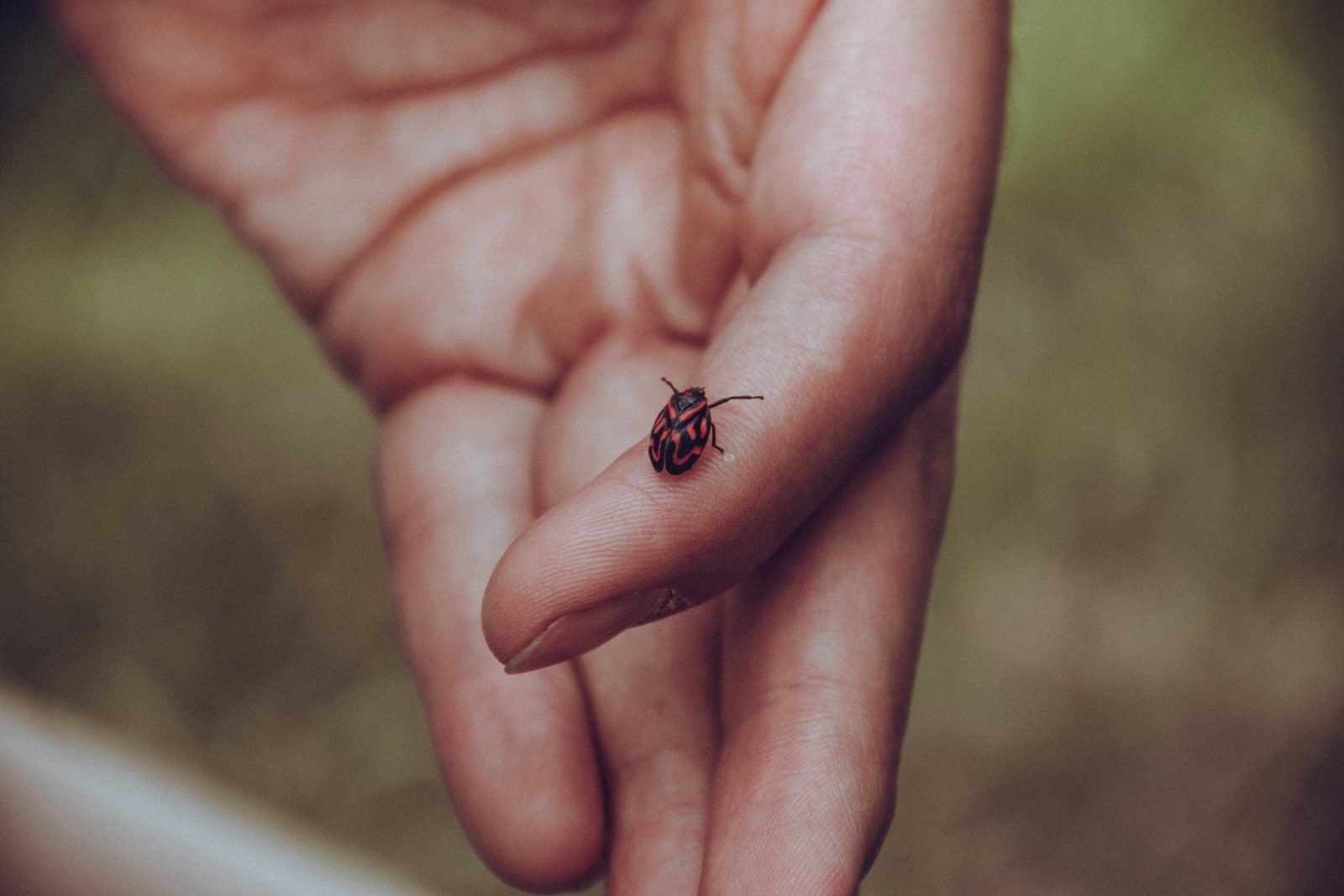During this time of year, when you step inside from the cold, your immediate actions might involve shaking off snow from your boots and thawing out cold hands. However, have you considered conducting a tick check?
If you presume that the low temperatures cause ticks to hibernate until spring, experts have some unexpected information to share. Let’s see why you need to check for ticks even in wintertime, why they are dangerous, and what preventive measures to take!
Understanding when and where ticks are active
Even in the heart of winter, it’s essential not to overlook the presence of ticks. Despite the cold weather, ticks remain active and are not eliminated by lower temperatures, as highlighted by Patrick (PJ) Liesch, MS, extension entomologist, and director of the Insect Diagnostic Lab at the University of Wisconsin-Madison.
An intriguing fact about ticks is their ectothermic nature, meaning they can’t produce internal heat. Instead, they rely on external sources, such as the surrounding temperature, to regulate their body temperature.
While ticks generally remain inactive and dormant in winter, instances of tick activity during this time of year can occur if the outdoor temperature rises sufficiently, according to Liesch.
There is evidence supporting this phenomenon. By December 7, 2023, the Maine Center for Disease Control and Prevention (CDC) had recorded 2,706 cases of Lyme disease, marking a record-breaking number for the year.
Experts attribute this surge to warmer weather conditions. Each winter, the average temperature gets higher, potentially contributing to the heightened tick activity and associated disease incidents.
Tick varieties linked to transmitting Lyme disease
There are approximately 850 species of ticks, with around 90 species found in the United States.
However, it’s crucial to note the diversity among tick species across different regions within the country. Not all ticks pose the same health risks, and the distribution of tick species varies by state and geographic location.
Regarding the transmission of Lyme disease, specific tick species play a crucial role. When considering Lyme disease, there’s a primary species of tick responsible for transmitting the disease pathogen.
In the United States, this responsibility falls upon a few species – the black-legged tick, commonly found in the Eastern U.S., and the Western black-legged tick, prevalent in the Western regions of the country.
These ticks, particularly the black-legged variety, also known as deer ticks, are notorious carriers of Lyme disease-causing bacteria.
It’s essential for individuals, especially those residing or spending time in areas where these ticks are prevalent, to be vigilant about tick exposure and take preventive measures to reduce the risk of tick bites and potential disease transmission.
Your guide to handling a tick bite
- Find and remove the tick
If you’ve been outdoors, it’s advised to conduct a thorough check for ticks promptly, even during winter. Whether right after returning indoors or during a subsequent bath or shower, carefully inspect yourself, your children, or other family members for ticks.
Should you discover a tick on your body, it is recommended to use fine-tipped tweezers or forceps for removal. Grasp the tick as close to your skin’s surface as possible and steadily pull it out. It’s crucial to avoid crushing or squeezing the tick to prevent forcing fluids containing pathogens from their salivary glands into your skin.
The aim is to minimize any form of traumatic disturbance to the tick. Ticks carry disease-causing pathogens in their salivary glands, and trauma can lead to the release of fluids that may potentially enter your skin, posing health risks.
- Identify the tick species
Before discarding a tick, it’s important to identify its species and even take a picture of it.
Ticks come in varying sizes depending on their life cycle stages. For instance, in the unfed or nymph stage, female deer ticks can be as tiny as a poppy seed. However, following seven days of feeding, a tick’s body enlarges significantly.
The duration a tick stays attached matters. Adult-stage ticks typically feed on a host for five to seven days and may begin transmitting diseases after the initial day of attachment.
If they’re attached for a shorter period, they might transmit some bacteria, but it’s generally insufficient to cause an infection, experts say.
It’s important to note that smaller ticks, particularly those in the poppy-seed-sized nymph stage, pose considerable risks. These tiny nymph-stage ticks are responsible for transmitting Lyme disease, as well as babesiosis and anaplasmosis.
- Keep an eye out for any symptoms
The timeline for the emergence of symptoms related to tick-borne illnesses varies depending on the specific disease.
Hence, if you’ve recently experienced a tick bite, it’s advisable to monitor yourself for any signs of illness. Keep an eye out for symptoms such as rashes (including the characteristic “bulls-eye” rash linked with Lyme disease), joint and muscle discomfort, fever, as well as headaches.
Joint discomfort is also a symptom of Rheumatoid Arthritis, which is not transmitted through tick bites. If you are already dealing with this condition, you may want to keep an eye our for the other symptoms listed. You can read more about what Rheumatoid Arthritis does to your body to get familiar with this condition.
It’s important to note that manifestations of tick-borne illnesses can appear weeks or even months after being bitten.
Certain tick-borne illnesses can escalate to severe and potentially life-threatening conditions.
Seek immediate medical attention if symptoms like confusion, weakness, stiff neck or paralysis develop, even if you’re uncertain about recent tick exposure.
Additionally, contact your healthcare provider if you suspect the tick bite might be infected, you’re experiencing persistent flu-like symptoms that aren’t improving, or you’re having recurring episodes of fevers.
These symptoms warrant medical evaluation and should not be overlooked.
Effective ways to protect yourself against ticks all year
There are several measures you can take to protect yourself against ticks:
- Use approved repellents – apply approved tick repellents.
- Awareness of tick habitats – understand areas where ticks reside and take precautions when in these environments.
- Regular tick checks – perform daily tick checks on yourself, your household members, and your pets.
- Clothing choice – wear light-colored attire covering arms and legs. Tuck long-sleeve shirts into pants, and pants into socks.
- Tick disposal – upon returning home, remove clothing and immediately place it in the dryer before washing on high heat to eliminate any ticks.
While these precautions are standard and suitable for most situations, you can also choose a more customized approach based on the tick’s stage and the season.
During the adult tick stage, you can focus on the knee and thigh areas by tucking shirts aims to prevent ticks from crawling under clothing.
However, in spring and summer, when nymphal stage ticks are prevalent, ensuring that pants are tucked into socks becomes crucial. This measure aims to prevent ticks from latching onto shoes and crawling up beneath pant legs, providing added protection during this specific period.
In conclusion, staying informed about tick behavior, implementing proactive measures, and being vigilant post-tick exposure are crucial elements in minimizing the risks associated with tick-borne illnesses. Taking these steps ensures better protection against tick bites and potential health complications throughout the year.














Find Us on Socials